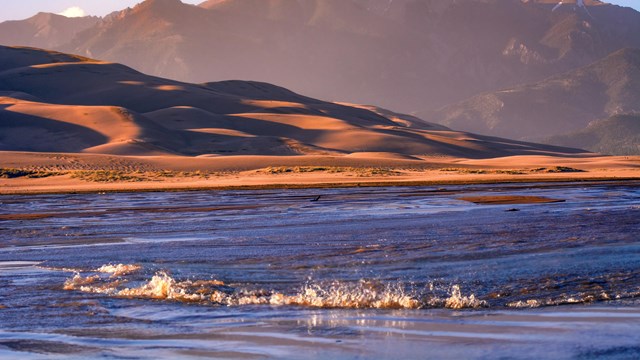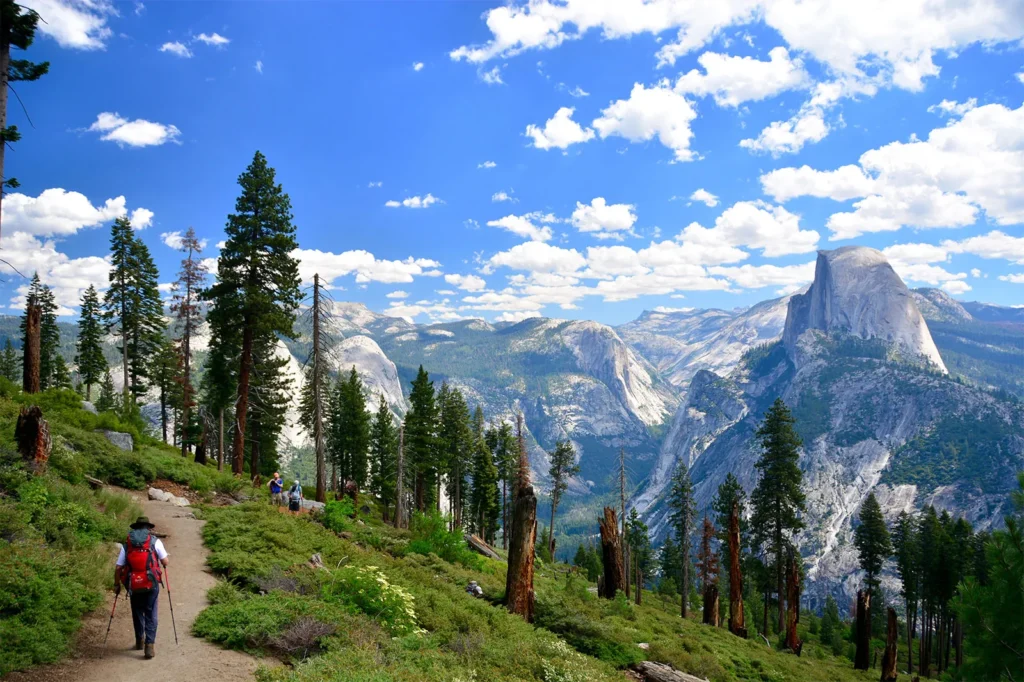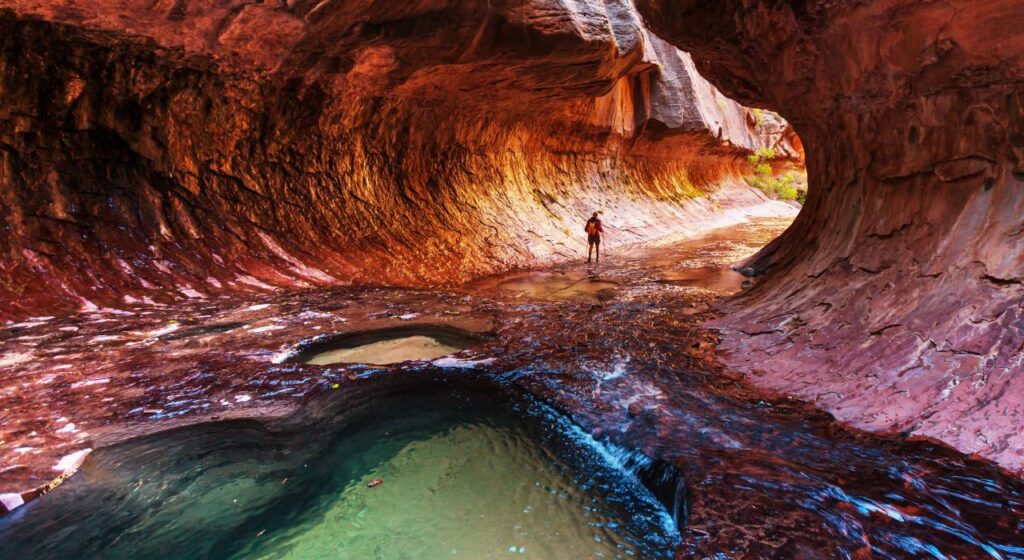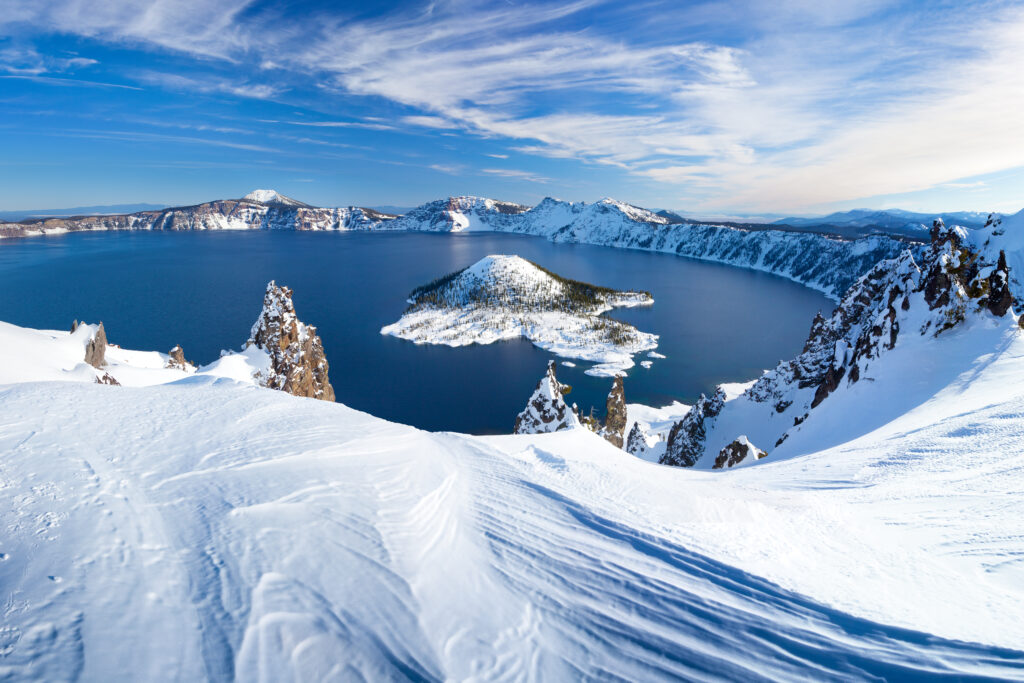These days, many of us are eager to explore the top national parks in the US. The past few years have significantly boosted Americans’ interest in outdoor activities, and record numbers of travelers continue to visit these protected areas. In fact, the National Park Service reported that visitation numbers in 2022 surpassed those of 2021 by 5 million, reflecting a consistent upward trend since the park service was established. For travelers, this surge in popularity means that well-known parks will be busier than ever. To avoid the crowds, it’s wise to plan visits during quieter times, such as late fall, winter, and early spring, and try to steer clear of weekends. Those willing to explore the most popular parks outside of peak season may be rewarded with fewer crowds and especially peaceful landscapes, possibly dusted with snow.
However, with 63 national parks across the country, there are ample opportunities to discover America’s diverse landscapes without battling the crowds at famous spots like the Grand Canyon, no matter when you visit. Here, we highlight 25 of the best national parks in the US, featuring a mix of iconic favorites like Yellowstone and lesser-known gems like The Gates of the Arctic for those seeking solitude.
For those seeking remote wilderness experiences and mountain-based adventures, Denali National Park and Preserve is unparalleled. This 6 million-acre park, home to North America’s tallest peak, Denali, offers a truly rugged escape, with just one road cutting through its vast expanse.
In spring and early summer, the parks valleys burst with wildflowers, set against a backdrop of high alpine, glacier-capped peaks that stretch for miles without human interference. Come winter, Denali transforms into a snow-covered paradise for avid skiers and mountaineers, and it’s also an ideal time for those hoping to witness the mesmerizing aurora borealis. While many visitors come to Denali in search of a remote wilderness adventure, you don’t need to be a survivalist to enjoy the park. Several excellent day hikes, like the eight-mile round trip Savage Alpine Trail, offer a taste of the wilderness, and there’s even a luxury lodge within the park boundaries for those seeking comfort. Off-trail hiking is encouraged, as the park only has 35 miles of established trails, but it’s crucial to be well-prepared with the right gear, knowledge, and a plan before setting out.
Many are surprised to learn that Colorado, famous for its towering alpine peaks and ski resorts, is also home to expansive sand dunes, including two of the tallest in North America. As you approach Great Sand Dunes National Park, you’ll see these golden orange dunes rising dramatically against a backdrop of snow-capped mountains—a scene that evokes the Moroccan desert more than North America. While the dunes are the main attraction, the park is home to a variety of ecosystems, including alpine tundra, subalpine forests, and meadows. This unique location is perfect for sandboarding—similar to snowboarding but on sand—with board and sled rentals available at the Great Sand Dunes Oasis just outside the national parks. For those interested in wildflowers, July and August are the best times to visit when the blooms are at their peak.
Exploring the dunes by foot is an option, though it’s easy to lose your way since there are no designated trails. Summer visitors should also be aware of frequent afternoon thunderstorms, which pose a risk in the open dunes where shelter is nonexistent.
For decades, rock climbers have flocked to Yosemite National Park, the most iconic of California’s nine national parks, to challenge their abilities and push the limits of the sport. With its towering granite monoliths, such as the legendary El Capitan, which soars over 3,000 vertical feet, Yosemite remains a premier destination for climbers from around the globe. For experienced hikers, the ascent of Half Dome is an unforgettable adventure. This 14-mile round trip hike includes a grueling 4,800-foot climb and requires the use of cables near the summit, making it one of the most challenging hikes in any national park. To manage the popularity of this hike, daily access is limited to 300 hikers through a permit system.
However, the awe-inspiring rock faces and the valleys they rise from can be enjoyed by non-climbers as well. With over 94 percent of Yosemite’s 1,200 square miles designated as wilderness, there’s no shortage of areas to explore. For those seeking less strenuous options, shorter day hikes like the half-mile Bridalveil Fall Trail or the five-mile Mirror Lake Loop offer easier, yet still stunning, alternatives. To fully immerse yourself in the park’s beauty, plan to stay a few days.
Zion National Park in southern Utah is famed for its striking landscape of pink Navajo sandstone cliffs and vibrant orange slot canyons. Spanning 230 square miles, the park features rivers as narrow as 20 feet winding between towering sandstone cliffs, while juniper trees pepper the desert hillsides. The park’s elevation, ranging from 3,700 to 8,700 feet, supports a variety of ecosystems, including desert, riparian, and conifer woodlands, and is home to diverse wildlife such as bighorn sheep, mule deer, and gray foxes.
Zion offers numerous hiking trails, with The Narrows and Angels Landing being two of the most popular. However, for those seeking a quieter experience, lesser-known trails like the Taylor Creek Trail in the Kolob Canyons Wilderness provide a more secluded adventure. For those who are comfortable in the backcountry, embarking on a multi-day backpacking trip offers a chance to fully immerse yourself in Zion’s unique landscape, with the opportunity to sleep under a spectacularly dark night sky. The West Rim Trail, a point-to-point hike approximately 15 miles long, is one of the park’s popular overnight options, offering sweeping views of the surrounding canyons and cliffs, though it does require arranging a shuttle at the end.
Crater Lake, the deepest and clearest lake in the United States, is nestled within the caldera of a collapsed volcano. With its dark blue waters plunging to an astonishing depth of 1,943 feet, the lake is fed solely by runoff from melting snow, resulting in some of the purest water in the world. Spanning 183,224 acres, the park’s rugged terrain around the lake’s rim offers breathtaking views of the steep hillsides that plunge into the water—a dramatic landscape formed by a volcanic eruption and collapse just 7,700 years ago.
While the lake itself is the park’s main attraction, there are 90 miles of hiking trails that weave through ancient coniferous forests, cross bare summits with panoramic vistas, and traverse dry, sub-alpine meadows. Rim Drive encircles the lake, providing numerous viewpoints and pull-offs, but to truly experience the park, exploring on foot is essential. The Garfield Peak hike, though only 3.5 miles round trip, involves a climb of over 1,000 vertical feet, making it a challenging trek. However, the 360-degree views from the summit are more than worth the effort. Given its popularity, the trail can get crowded, so it’s best to hike during the off-season or start early in the morning.











